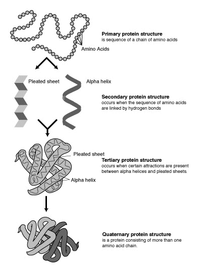
Photo from wikipedia
The magnitude of connectedness among management units (e.g., flocks and herds) gives a reliable estimate of genetic evaluation across these units. Traditionally, pedigree-based methods have been used to evaluate the… Click to show full abstract
The magnitude of connectedness among management units (e.g., flocks and herds) gives a reliable estimate of genetic evaluation across these units. Traditionally, pedigree-based methods have been used to evaluate the genetic connectedness in China. However, these methods have not been able to yield a substantial outcome due to the lack of accuracy and integrity of pedigree data. Therefore, it is necessary to ascertain genetic connectedness using genomic information (i.e., genome-based genetic connectedness). Moreover, the effects of various levels of genome-based genetic connectedness on the accuracy of genomic prediction still remain poorly understood. A simulation study was performed to evaluate the genome-based genetic connectedness across herds by applying prediction error variance of difference (PEVD), coefficient of determination (CD) and prediction error correlation (r). Genomic estimated breeding values (GEBV) were predicted using a GBLUP model from a single and joint reference population. Overall, a continued increase in CD and r with a corresponding decrease in PEVD was observed as the number of common sires varies from 0 to 19 regardless of heritability levels, indicating increasing genetic connectedness between herds. Higher heritability tends to obtain stronger genetic connectedness. Compared to pedigree information, genomic relatedness inferred from genomic information increased the estimates of genetic connectedness across herds. Genomic prediction using the joint versus single reference population increased the accuracy of genomic prediction by 25% and lower heritability benefited more. Moreover, the largest benefits were observed as the number of common sires equals 0, and the gain of accuracy decreased as the number of common sires increased. We confirmed that genome-based genetic connectedness enhanced the estimates of genetic connectedness across management units. Additionally, using the combined reference population substantially increased accuracy of genomic prediction. However, care should be taken when combining reference data for closely related populations, which may give less reliable prediction results.
Journal Title: PLoS ONE
Year Published: 2018
Link to full text (if available)
Share on Social Media: Sign Up to like & get
recommendations!